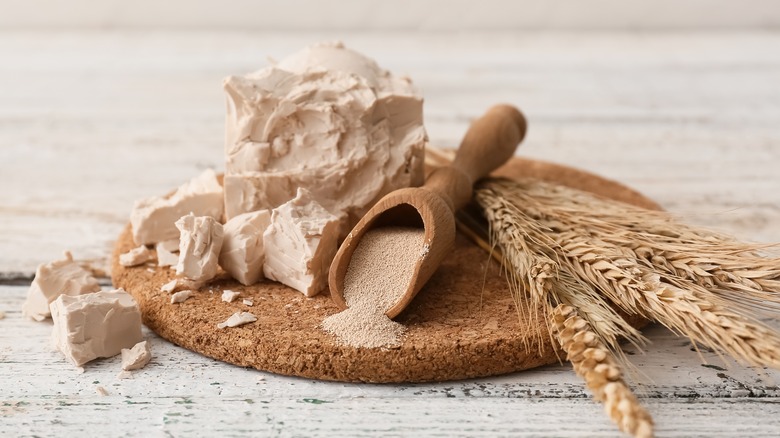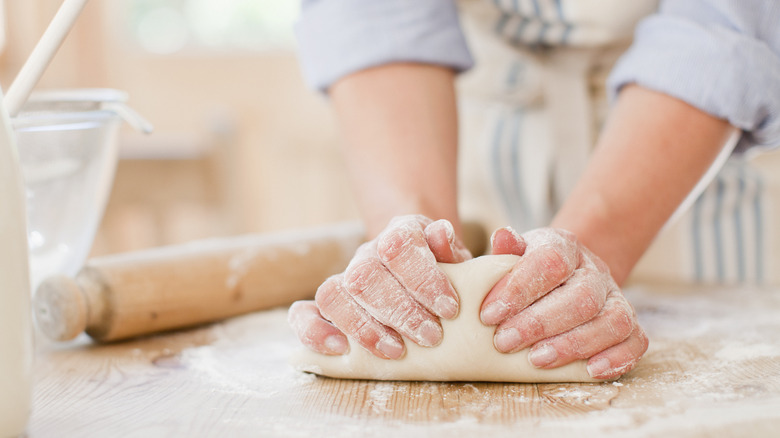A Beginner's Guide To Baking With Yeast
For the novice baker, approaching a project that calls for yeast can be scary. In truth, baking with yeast can be a satisfying experience if you follow a few simple tips. Here's everything you need to know about baking with yeast.
You can face a multitude of yeast choices in the baking section of most supermarkets. Don't panic. The two basic types are active or instant yeast (we'll leave rapid-rise and fresh yeast options for another day). For most applications, either of these types will work. The main difference is that active dry yeast should be activated in liquid to start the process, while instant yeast can be mixed directly into dry ingredients. While some say you don't have to bloom active dry yeast, doing so ensures it's still alive and ready to work its magic.
Instant yeast is also more forgiving in terms of temperature tolerances, but there's little difference otherwise, so don't stress. Either will work if a recipe calls for mixing the yeast with water. One other thing they have in common is that both types can expire. To give yourself every chance of success, check the expiration date on your packet, and when in doubt, buy new yeast. Likewise, store it in the freezer if you're not a frequent baker.
Make sure your yeast is healthy
If you have some yeast of unknown origin, you can check its health by dissolving a pinch of sugar and a pinch of yeast into a ½-cup of lukewarm water. If alive, the yeast will begin to bubble and foam a little bit in just a few minutes. If your yeast won't foam, it's time for new stuff. Yeast is the fuel to your baking success, so save yourself time and frustration by starting with healthy yeast every time. Yeast thrives at temperatures up to about 115 degrees Fahrenheit, but temperatures above that can be fatal to the fungus (yes, yeast is related to mushrooms). Instant yeast is a little more heat-tolerant, but I like to aim to use water at about 110 degrees Fahrenheit, which feels like a nice, warm bath.
The same goes for the dough. Once your dough is ready to rise, put it in a warm spot. Somewhere between 70 and 78 degrees Fahrenheit is ideal, so if your house is cold, look for a cozy location, like the inside of your oven with the light turned on. But be careful not to bake it prematurely! If your house is warmer, things may go faster than expected, so keep an eye on it.

